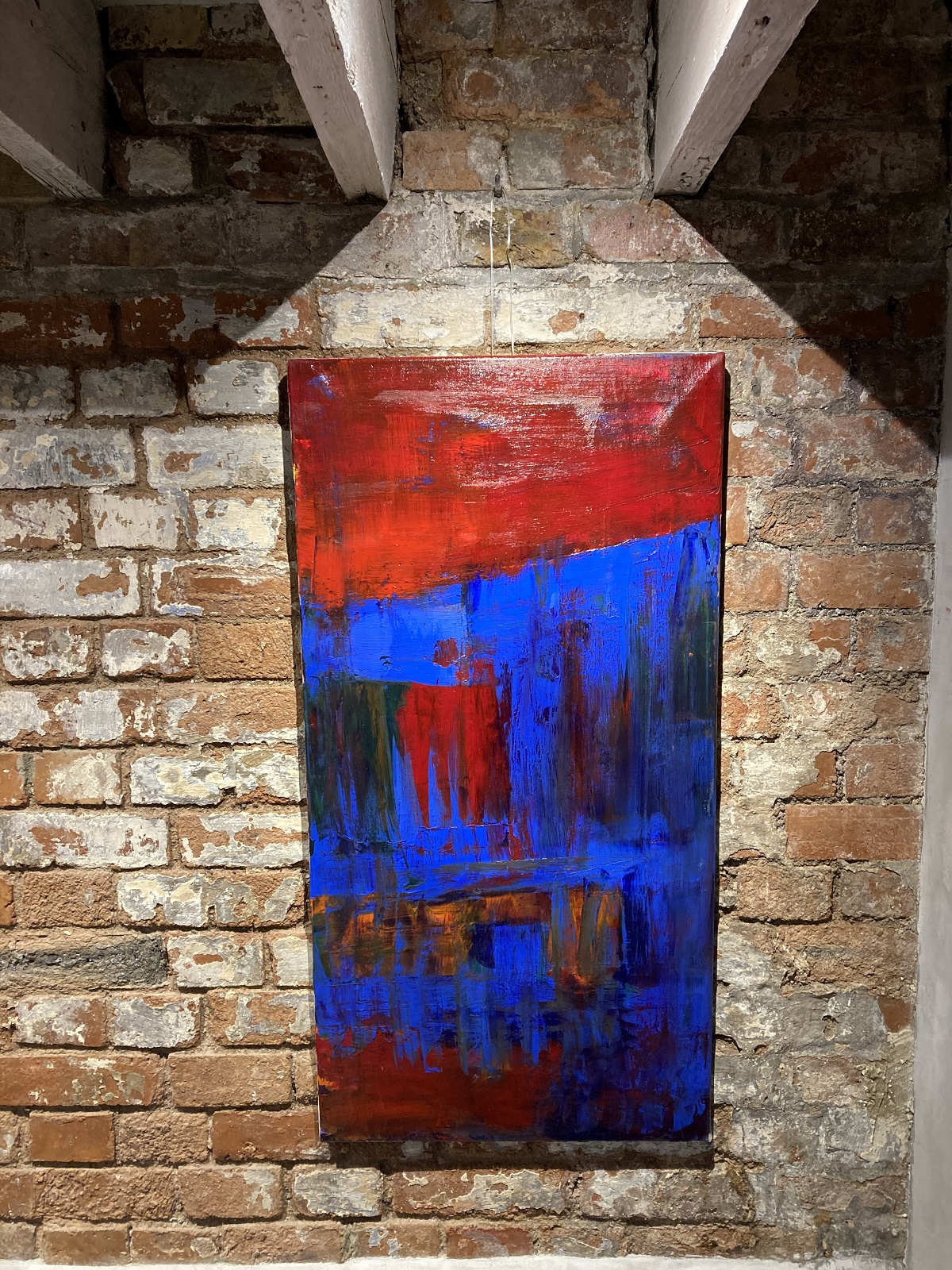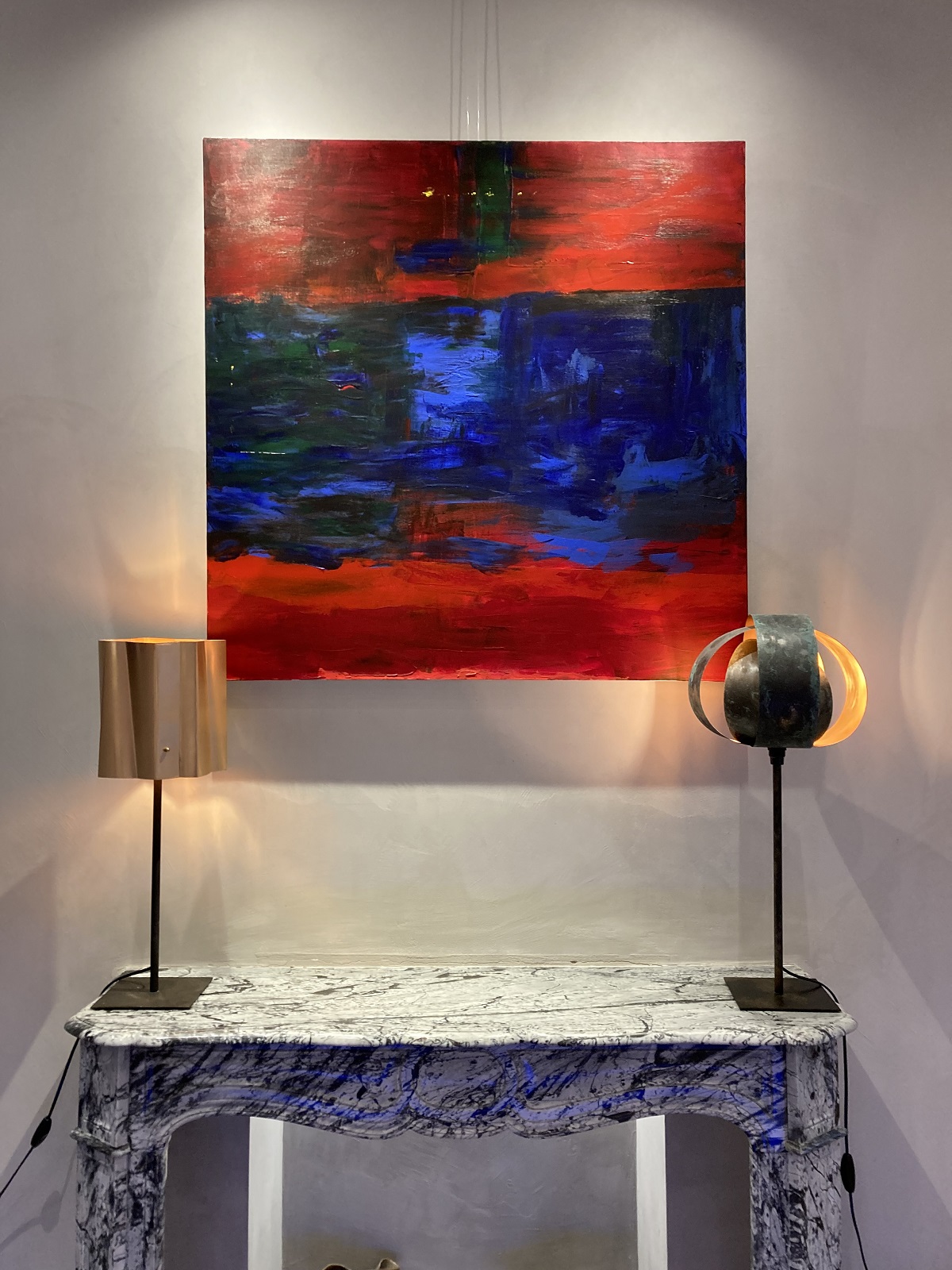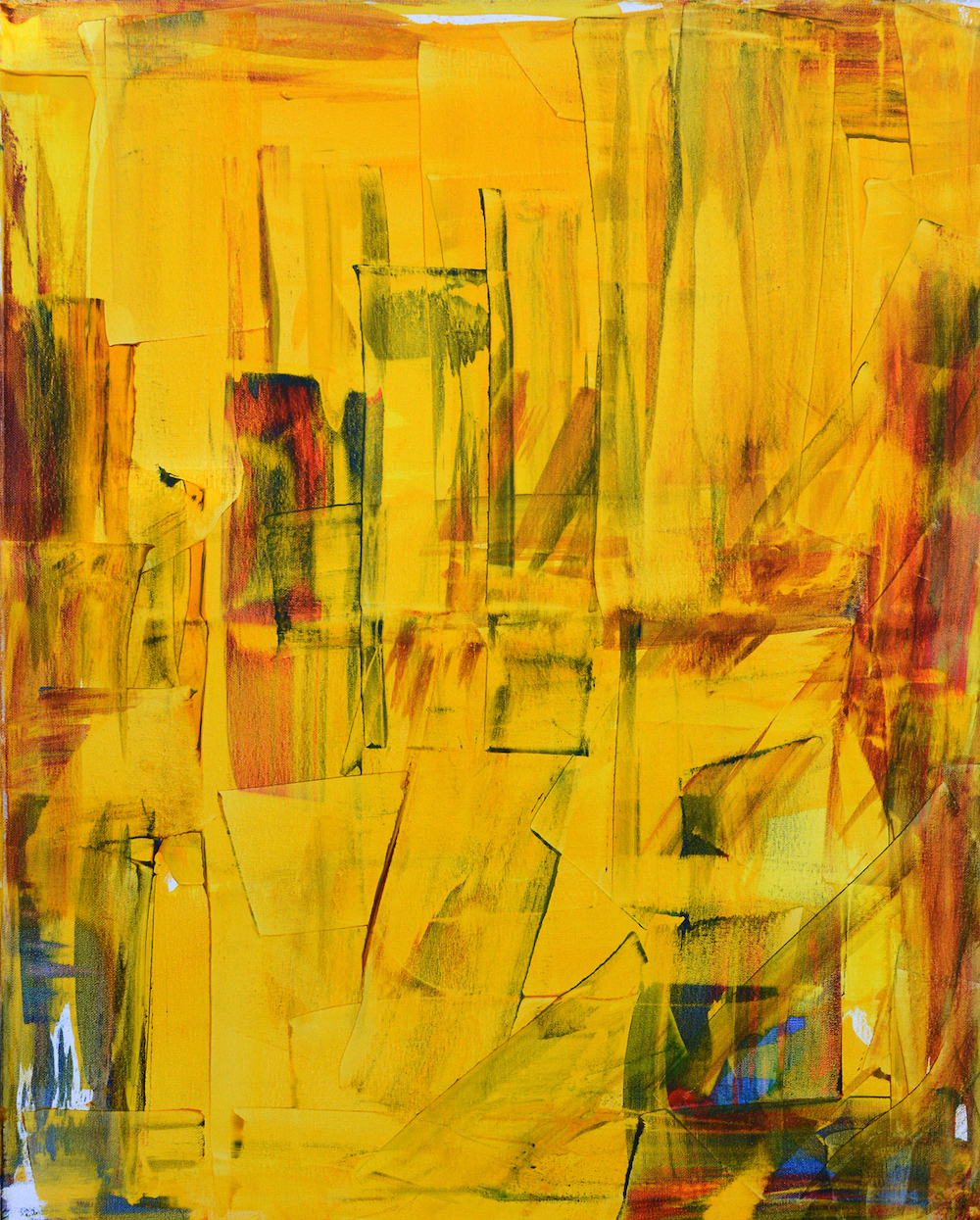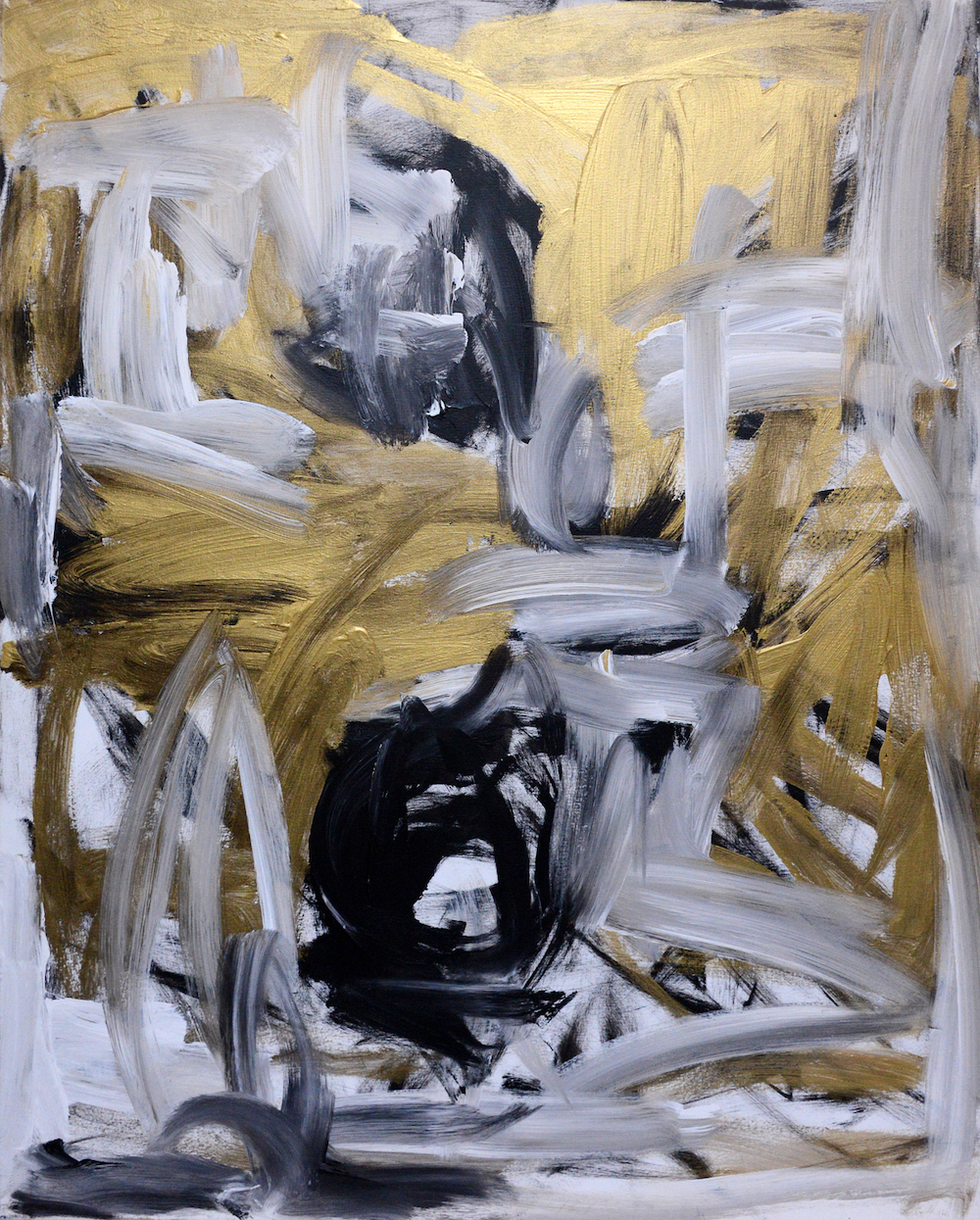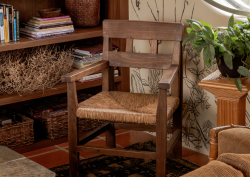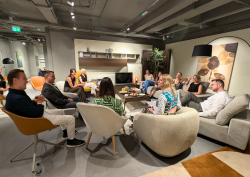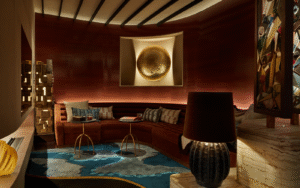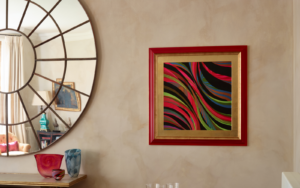With colour being the vibrant thread that runs through the work of artist Frances Bildner, she is a strong advocate of the transformative power of art in any environment. We caught up with her to ask the simple but loaded question – what’s so important about colour…?
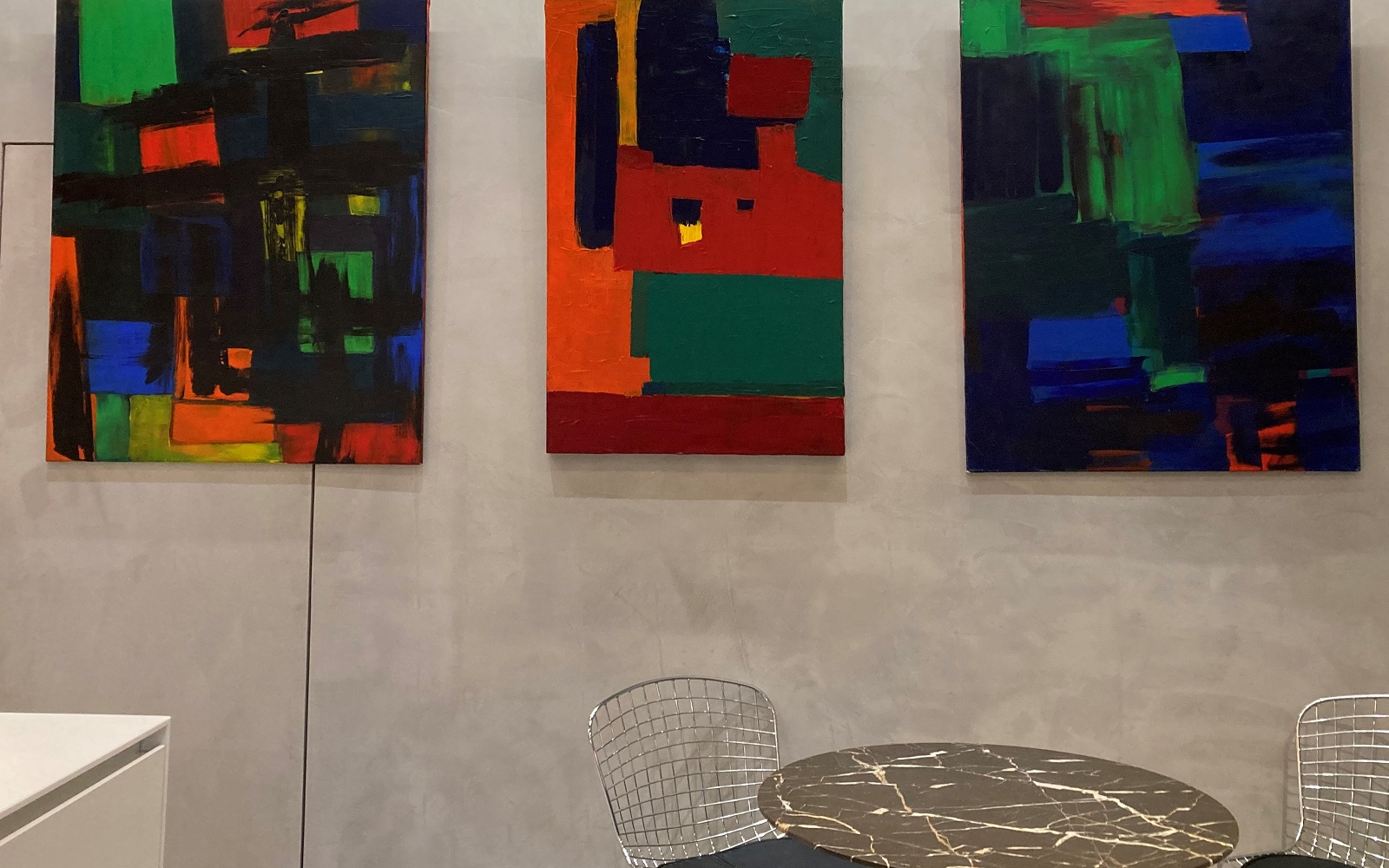
There is no doubt that colour plays a major role in our daily lives and, more importantly, influences and impacts on our mental health and general feeling of wellbeing. Much has been spoken about mental health recently – mental health and illness have been a taboo subject for years, especially in the United Kingdom, but with recent events still hovering on the horizon, it is now talked about continually.
Environment is extremely important for good mental health. Consider grey drab walls and their effect on a person who may be mentally fragile. It could exacerbate their already depressed mood. The opposite of that holds true as well, and bright colours in hotel lobbies and bedrooms add a great deal, not only to the hotels brand image, but it also makes the hotel a welcoming and friendly place to go.
The most effective way of injecting colour into a commercial or hospitality space is, in my opinion, through art. Apart from the art making its own statement, it also creates an environment that allows customers to feel comfortable and inspired.
Looking at colours specifically, there has been a lot of research on what different colours bring to the table. If used intelligently, colours can both enhance and direct an experience – the colours and art you would put in a spa for example would be different from those in a restaurant. Blues and greens add a calm atmosphere, reds and pinks stimulate passion, adventure, and energy. Purple has been shown to boost creativity and productivity, while shades of yellow stimulate appetite.
Apart from enhancing the customers experience, consciously curated colour can assist hotels in their business and interactions with clients. Having happy customers who have reacted positively to their environment is advantageous to everyone. And colour can make this happen.
The importance of colour has long been recognized by interior designers and architects. Bright and even subtle colour eliminates the institutional feel of places like hotels. In hospitals unfortunately they still don’t use enough colour or good paintings to help patients and lift the mood. The corridors and rooms still retain the grey monotony which must have a negative effect on patients. Happily, hotels are recognising the importance of colour and original art, using both to bring happy customers in and to have them return.
It is important to remember that we are both visual and auditory beings. Light comes in through our eyes and is translated into signals in our brains which tell us whether we should approach and remain in an area or whether the lack of light warns us and makes us move away. Colour influences us in how we respond to everything around us. It can affect how we feel, think, how we interact with others and even whether we buy a certain item or have a drink or a meal. It is all subtle and subliminal, but it affects us all. As Picasso once said “Colours, like features, follow the changes of the emotions” .
The concept of colour psychology has become a huge topic in marketing, art, design and even business psychology. It is important to remember that peoples feelings about colour are often deeply personal and rooted in individual cultures. White has been seen in western countries to represent purity, while in eastern countries white may be seen as mourning. Different colours appeal differently to individuals, and can have varied cultural associations collectively.
Several ancient cultures like the Chinese and Egyptians practiced chromotherapy, sometimes called light therapy, to heal. It is still used today as a holistic or alternative treatment. Colours and emotions are closely interlinked, so designers can take this on board, and choose colour specifically to get the results they are looking for.
Hotel guests today make their choices based on what kind of experience they envision for themselves. Colour evokes an emotion which can be attached to an experience. People can, we are told, make subconscious evaluations about their environment in as little as ninety seconds. So is colour an important aspect of hotel design? It would appear to be a vital element for everyone, from clients through to staff. Without it a drab unfriendly environment is the result.
In my opinion, yes, colour is important and no hotel should be without bursts of colour provided by good art!
Frances Bildner Expressive Arts is one of our Recommended Suppliers and regularly features in our Supplier News section of the website. If you are interested in becoming one of our Recommended Suppliers, please email Katy Phillips.
Main image credit: Frances Bildner Expressive Arts





